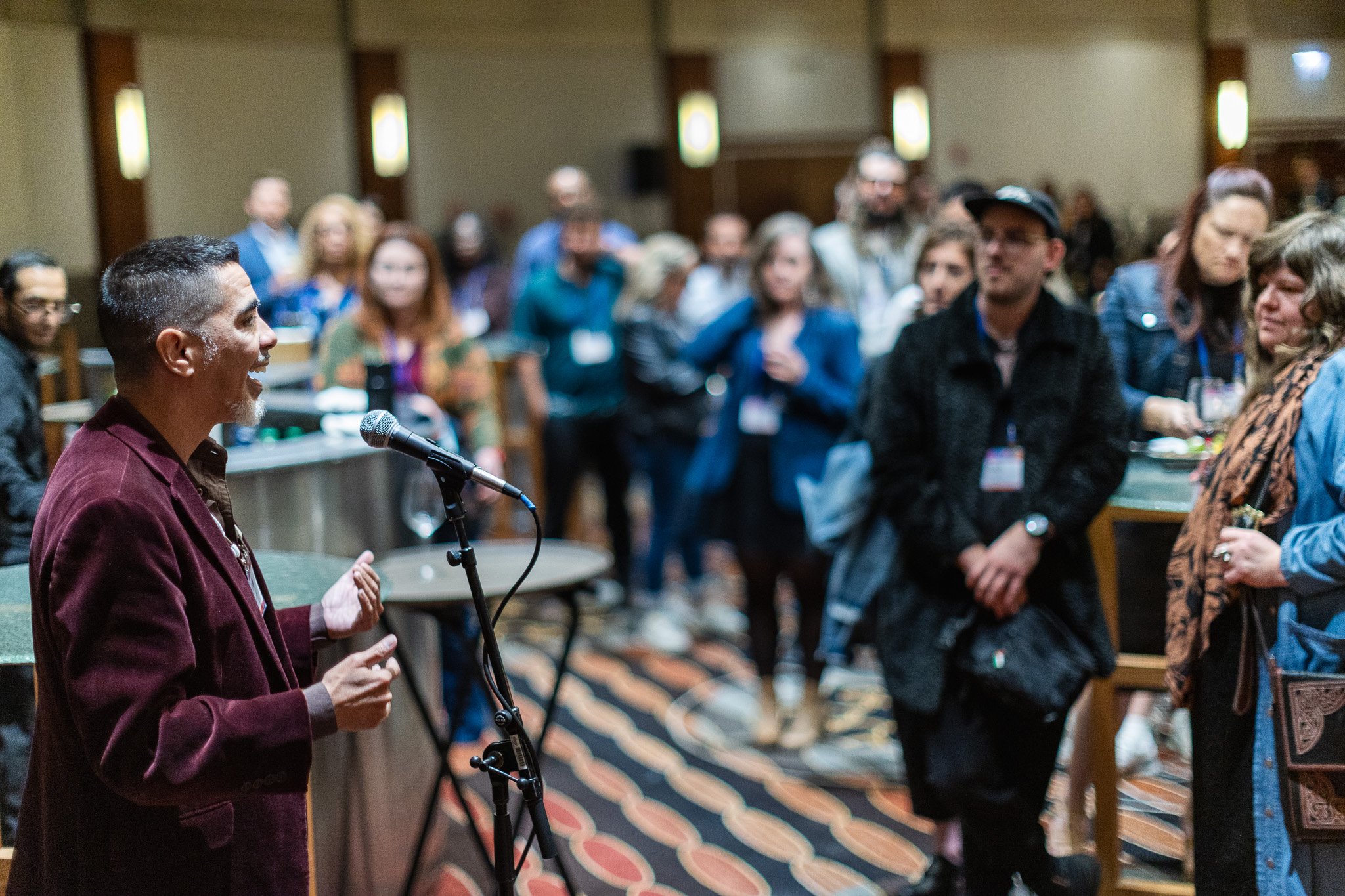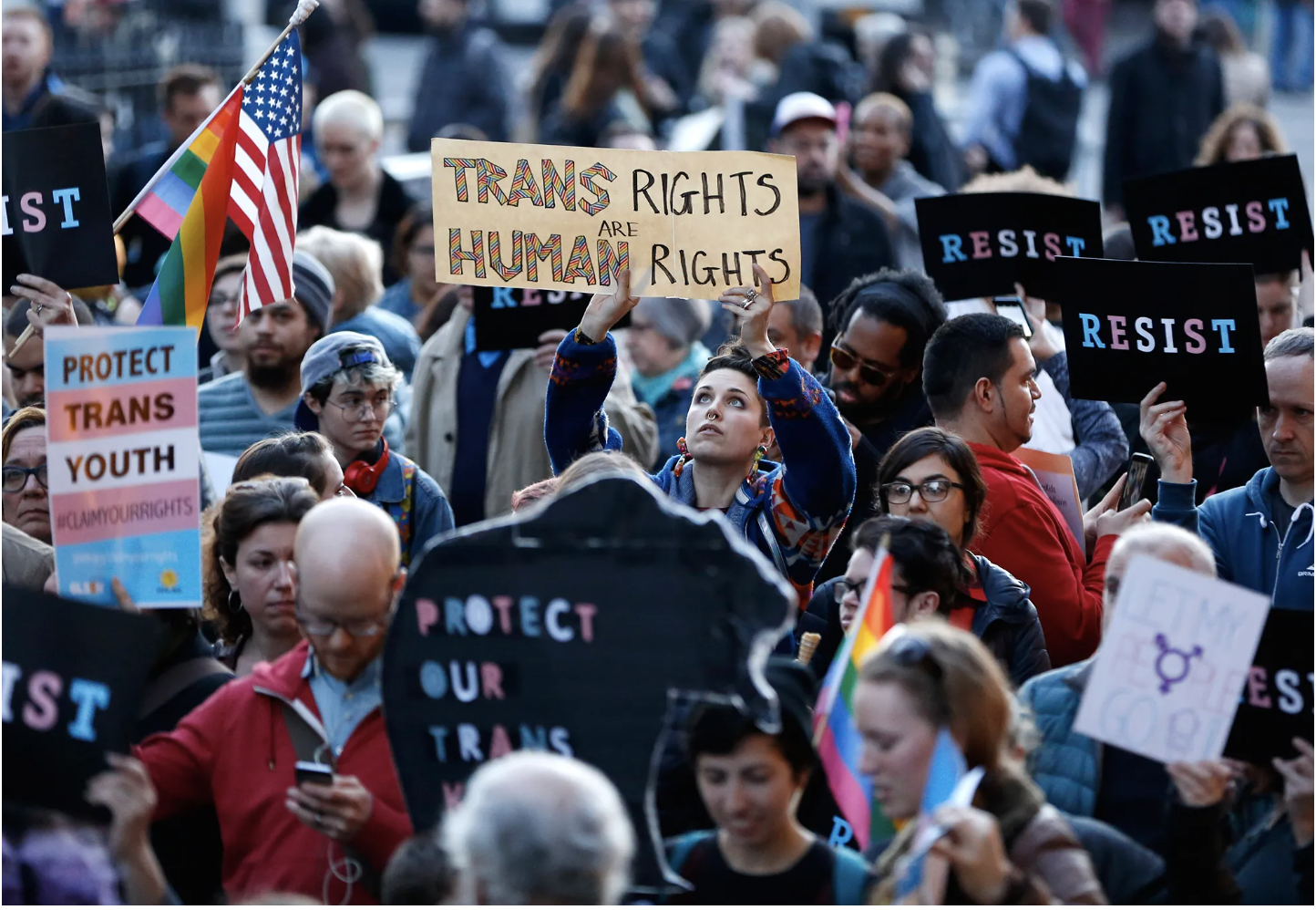Our Triumph is Inevitable
This post does not exist to list the challenges laid out before those of us who value democracy, equity, and justice. This post exists to assert that our triumph is inevitable, as is the role that the cultural community plays in it. This will be our finest hour.
We are making our future and breathing life into it. The right has been better at this than the center and the left, until now. We are very lucky that this presidential administration has brought clarity to what we have known for so long: that a small number of corporate elites is trying to steal resources from so many of us, while also trying to convince us that the most vulnerable people are the culprits. They have acted with such a lack of subtlety that even their culture war efforts are falling short. No one believes that immigrants or Trans people are firing hundreds of workers, freezing federal grants to our communities, or threatening Medicaid, Medicare, and Social Security.
The successes we’ve seen – the protests, the lawsuits against the executive orders, the embrace of corporations that are continuing their Diversity, Inclusion, and Equity efforts – have been driven by bold individuals and determined nonprofit organizations. No political party is saving us – nor will it ever. We are bigger than any political party and always will be.
President Eddie Torres addressing conference attendees at GIACON24.
The right has been planning a conservative future since the Civil Rights era. For decades, the right has acted as more than just planners and investors; they have acted as artists – moving beyond simply planning for new generations while acting as if that future is now and putting it into being. As Stephen Duncombe explains in his book Dream: Re-imagining Progressive Politics in an Age of Fantasy, the George W. Bush administration dismissed the “reality-based media,” making clear that the right was acting as world-builders, enacting their vision for the future as though it was already here. The corporate tech industry, which has become so aligned with this new presidential administration, was in part inspired by the Italian Futurists – a movement of techno-reactionaries who looked to new technology as part of the re-establishment of an old social order.
Cultural communities are building our own future. While I could expand on the work of many artists that are working with new technology, I couldn’t say it better than Sage Crump did during her dialogue with Ruha Benjamin and Salome Asega at our 2020 conference. From the blog by Tram Nguyen: “As Sage Crump reminded us, ‘Technology is how you do a thing, whether it’s prayer or food’; tech is not just software and hardware, it is also cultural tools, and our communities are also toolmakers and world-builders.”
Future/Present: Arts in a Changing America is a great elucidation of our nation’s cultural communities’ world-building. Vicky Holt Takamine, from the PA’I Foundation, explains, “I see hula as a tool for organizing community around issues that are facing Native Hawaiians.” Among the NDN Collective’s Radical Imagination Grant recipients that GIA featured at our 2022 conference was Marx Cassity (Osage/Kaw). Blogger Tram Nguyen wrote, “Cassity shared music from their folk-rock-electronic album about Two-Spirit belonging and its connection to decolonization. Gender diverse people were thriving before colonization; Cassity noted that in 2020, 30% of Native LGBTQ youth attempted suicide. To not only continue to exist, but to thrive and stand in their power as Two-Spirit people is itself an act of radical imagination.” These acts of utilizing ancestral practices to make our future world are what Kanien’kehà:ka and Mexican Indigenous artist and writer Sadekaronhes Esquivel (any pronouns) are building as indigenous futurists.
Our cultural communities are also influencing government agency, policy and practice. National Arts Policy Alliance, US Regional Arts Organizations, and regional efforts like Illinois Arts Alliance and Creative West are doing important work providing research, professional development, and organizing advocacy.
The cultural community is making an impact on federal practice. As of this writing, The National Endowment for the Arts agreed to remove a certification requirement that forced artists to attest that they will not “promote gender ideology” in order to apply for funding. The outcome of the case – in which The American Civil Liberties Union, the ACLU of Rhode Island, Rhode Island Latino Arts, National Queer Theater; The Theater Offensive; and the Theatre Communications Group argues that the new certification requirement and funding prohibition violates the Administrative Procedure Act, the First Amendment, and the Fifth Amendment – is pending.
Photo by Kathy Willens
This is one of many executive orders that are being challenged in court. Thus far, the courts have affirmed that no executive order can supersede the law. The law protects protected classes like poor people, women, racialized people, Trans people, LGBTQIA2S+ people, and people with disabilities.
Cultural funders have been increasing their support to communities under attack. In Chicago, MacArthur Foundation has announced an increase to their payout in response to the federal funding freezes and Paul M. Angell Foundation has developed a Rapid Response Fund for their grantee organizations. In the Bay Area, Kenneth Rainin Foundation has announced $4 million in new funding to protect their communities. St Paul & Minnesota Foundation has allocated $100,000 to Minnesota Council on Nonprofits for advocacy and legal efforts and is directing $2 million to organizations focused on democratic participation, legal defense, and related initiatives. New York Community Trust has announced a Rapid Response Fund, providing support for technical assistance and increased overhead support. More foundations are announcing increased efforts every day.
The cultural funding community is part of a larger ecosystem that includes the Protecting the Right to Protest Fund, Proteus Fund: Grantee Safety and Security Fund, Neo Philanthropy’s Rapid Assistance Security Initiative, Trans Justice Funding Project, and Boston Foundation Safety Net grants, among many others.
Huge swaths of the corporate community have complied with this presidential administration’s opposition to diversity and inclusion in advance. The public have responded with boycotts while increasing patronage to those businesses that have stuck to their values and the public’s desires.
This federal administration is hoping that we’re as malleable and as frightened as those corporate leaders are. They’re hoping we’ll be scared enough to comply in advance. They’re wrong. Our triumph is inevitable. We will look back on this moment with pride as we live in the future we made. I will leave you with the words of Sage Crump, “The act of dreaming is to refuse certain choices. The decision to step into that landscape of the unknown demonstrates resilience—our ability to stay connected and move toward that which is life-affirming.
ABOUT THE AUTHOR
Eddie Torres is president & CEO of Grantmakers in the Arts


